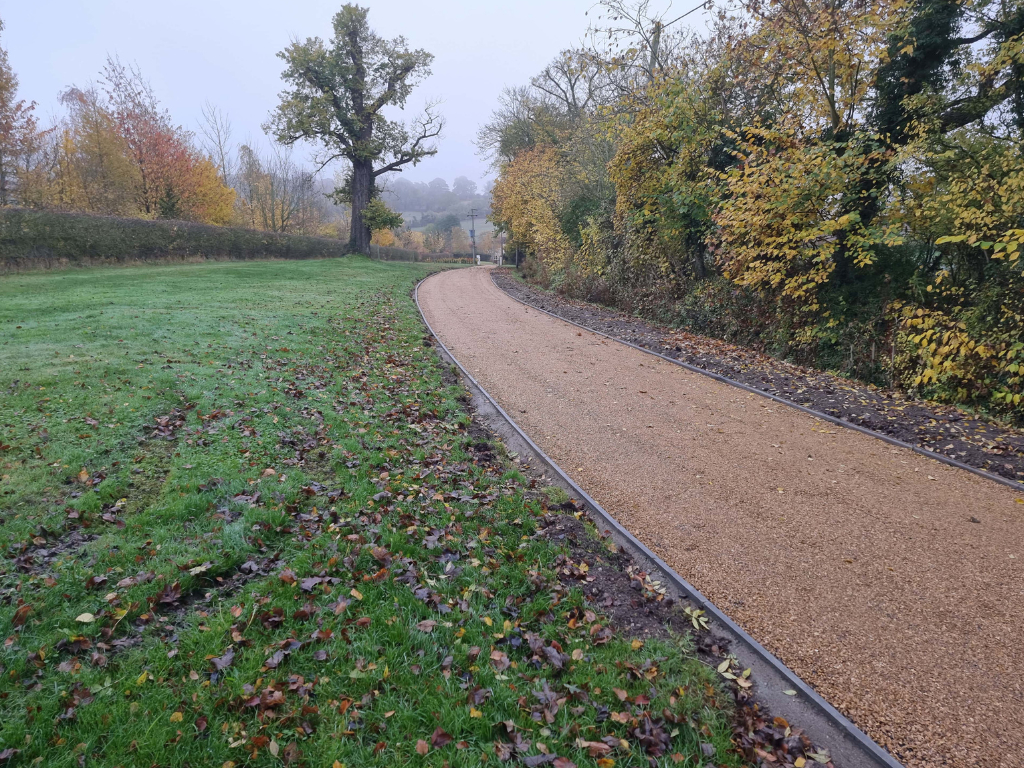Tarmac vs. Grass Pavers for New Build Parking Areas: Making the Right Choice
Introduction: When it comes to creating parking areas for new builds, developers and property owners are often faced with choosing the right paving material. Tarmac and grass pavers are two popular options with unique advantages and considerations. In this blog post, Watton Driveway Solutions will compare tarmac and grass pavers for newly built parking areas, helping you decide based on your needs and priorities.
Tarmac: The Classic Choice
Tarmac, known as asphalt, is a tried-and-true material for parking areas. Here’s why it’s a popular choice:
- Durability: Tarmac is renowned for its strength and durability, capable of withstanding the weight of vehicles without cracking or crumbling. It’s ideal for high-traffic areas.
- Smooth Surface: Tarmac provides a smooth and even surface, making it easy for vehicles to manoeuvre and park. It reduces the risk of damage to tires and suspension systems.
- Quick Installation: Tarmac can be installed relatively quickly, allowing for efficient construction of parking areas. This is particularly important for new builds with tight timelines.
- Low Maintenance: Routine maintenance typically involves periodic sealing and occasional repairs, resulting in minimal downtime.
- Weather Resistance: Tarmac is resistant to weather effects, including rain, snow, and UV rays. It remains safe for vehicle use year-round.
Grass Pavers: The Eco-Friendly Alternative
Grass pavers, on the other hand, offer a more environmentally friendly approach to parking areas:
- Permeability: Grass pavers are designed to allow water to infiltrate the surface, reducing stormwater runoff and minimising the risk of flooding. This can help manage water on-site and prevent erosion.
- Green Aesthetics: Grass pavers blend seamlessly with the surrounding landscape, providing a more natural and aesthetically pleasing appearance. They can enhance the curb appeal of your new build.
- Sustainable: Grass pavers contribute to sustainable construction practices by promoting vegetation growth and reducing the heat island effect often associated with traditional pavement.
- Versatility: Grass pavers can be used for parking areas and pathways, offering flexibility in design and layout.
Considerations for Your New Build
The choice between tarmac and grass pavers for your newly built parking area depends on several factors:
- Intended Use: Consider how the parking area will be used. Tarmac may be the better choice if it’s a high-traffic commercial lot. For residential or eco-conscious projects, grass pavers may align with your goals.
- Budget: Compare the costs of installation, maintenance, and long-term sustainability to determine the best fit for your budget.
- Aesthetics: Evaluate how each option complements your new build’s overall look and feel. Tarmac provides a traditional appearance, while grass pavers offer a greener, more natural aesthetic.
- Environmental Impact: Assess the environmental impact of your choice. If sustainability is a priority, grass pavers may be the preferred option.
- Maintenance: Consider the level of maintenance you’re willing to commit to. Tarmac requires less maintenance, while grass pavers may require regular upkeep to ensure vegetation remains healthy.
Conclusion: Choosing between tarmac and grass pavers for your newly built parking area depends on your project’s specific requirements and priorities. Whether you opt for the classic strength of tarmac or the eco-friendly appeal of grass pavers, rest assured that your parking area will be a functional and visually appealing addition to your new build.
Call us on: 01953 660 780
Click here to find out more about Watton Driveway Solutions
Click here to complete our contact form and see how we can help with your driveway needs.

